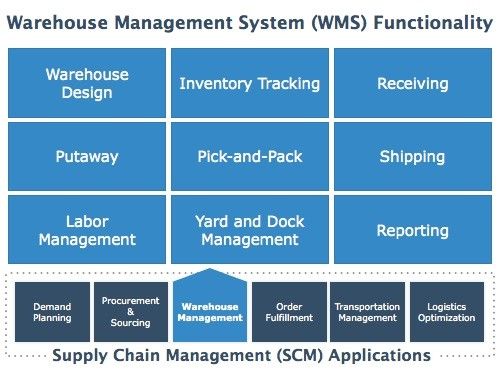SAP WMS (Warehouse Management System)
Definition or Meaning - What is SAP WMS?
Full form or SAP WMS stands for (Warehouse Management System), is an efficient tool for managing the stocks available in the database, shifting of goods from one place to another, and making updates with the stock management system. For introducing effective operational tasks in their warehouses, organizations across the world are now looking towards hiring the experience and expertise of specialists/ consultants in this field of SAP management.
The benefits of Warehouse Management System (WMS) to the SAP warehouse are very crucial because:
- It can troubleshoot and deal with complex warehouse stocks in an enhanced and simplified manner.
- The flow of material becomes very smooth with the pick-and-put away techniques of WMS.
- Proper processing of stock goods, effective management of receipts of goods, and stock transfers has made work processes much more progressive and transparent for organizations and their customers alike.

To better tackle the challenges presented by the current scenario, companies are now maintaining the inventories in their warehouse stocks with the help of SAP WMS. The inventory management application does all this and more with the integration of a systematic and economical approach; thereby making plan executions and application of tools easier and formulated for all concerned.
Read Next
Tutorials
- Printing in Warehouse Management
The following problems occur if you print in WM: The system determines the incorrect printer The system prints with the incorrect print code The system prints with the incorrect spool code ... - SAP WMS (Warehouse Management System) Module Course, Fees, Scope and Certification
SAP WMS (Warehouse Management System) Courses The courses available for WMS aspirants are classroom based courses in warehouse management that make one familiar with all the fundamentals and working o ...  WM Cycle Count Process Flow
WM Cycle Count Process Flow
What is Cycle Count?A cycle count is an auditing process through which we can check the accuracy of our inventory records such as (subset of inventory, in a specific location etc) by counting items ph ...- Difference between Cross-Dock and Drop-Ship
Drop-Ship vs Cross-DockIn warehouse operation these two terms Cross Docking and Drop Shipping are very essentials for items to be shipped, received, stored and picked etc. So, one need to understand t ...  Difference between WM and IM- Stock comparison with LX23
Difference between WM and IM- Stock comparison with LX23
Stock comparison with LX23The stock comparison report first reads all IM stocks and all special stocks. In the second step the WM stocks are read and summed up. If a difference then results when a com ... Define and Assign Warehouse Number
Define and Assign Warehouse Number
In this tutorial, you will learn the step-by-step process define warehouse number, and assign it to the plant and storage locations to it. What is Warehouse? A warehouse is a location that is us ...- What is a Storage Type in SAP?
A Storage Type is defined on the basis of its space or area occupied by a product or item for example High Rack Storage, Bulk Storage, Shelf Storage, Open Storage, Goods Receipt area, etc. In other ...  Dynamic Cycle Counting (DCC) Activation
Dynamic Cycle Counting (DCC) Activation
How to activate Dynamic Cycle CountWhile accessing the IMG customization the option Dynamic Cycle Counting (DCC) node is not available under the following menu path:'Logistic Execution > Wareho ...- Difference between SAP WM and SAP EWM
SAP Extended Warehouse Management vs SAP Warehouse ManagementThis tutorial explains SAP EWM (Extended Warehouse Management) vs SAP WM (Warehouse Management). As we know SAP EWM is a new ...